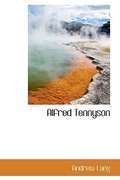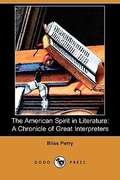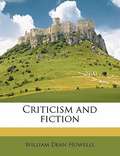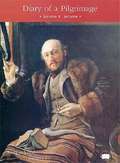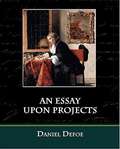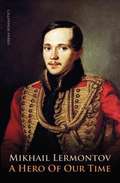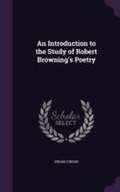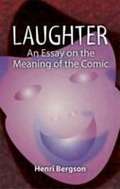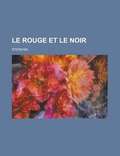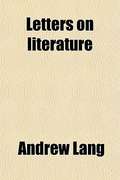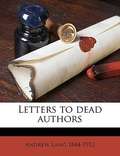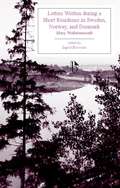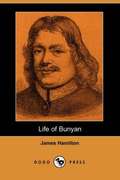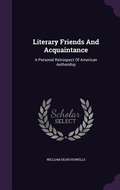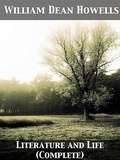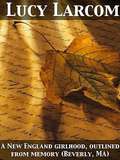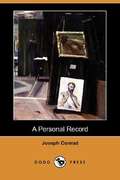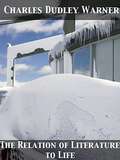- Table View
- List View
Alfred Tennyson
by Andrew LangINTRODUCTION. IN writing this brief sketch of the Life of Tennyson, and this attempt to appreciate his work, I have rested almost entirely on the Bio- graphy by Lord Tennyson with his kind per- mission and on the text of the Poems. <P> <P> As to the Life, doubtless current anecdotes, not given in the Biography, are known to me, and to most people. But as they must also be familiar to the author of the Biography, I have not thought it desirable to include what he rejected. The works of the localisers I liave not read Tennyson disliked these researches, as a rule, and they appear to be unessential, and often hazardous. The professed commentators I have not consulted. It appeared better to give ones own impressions of the Poems, unaffected by the impressions of others, except in one or two cases where matters of fact rather than of taste seemed to be in question. Thus on two or three points I have ventured to differ from a distinguished living critic, and have given the reasons for my dissent. . .
The American Spirit in Literature: A Chronicle of Great Interpreters
by Bliss PerryA unique set of short stories, poems and novels from the late 19th to early 20th centuries. From tales of love, life and heartbreaking loss to humorous stories of ghost encounters, these volumes captivate the imaginations of readers young and old. <P> <P> Included in this collection are a variety of dramatic and spirited poems that contemplate the mysteries of life and celebrate the wild beauty of nature. This is a history of American literature and writers that includes chapters on colonial literature, the knickerbockers, the transcendentalists, Emerson, Thoreau, Whitman, Poe and many others as well.
Cowley's Essays
by Abraham CowleyThe calm spirit of Cowley's "Essays" was in all his life. As he tells us in his Essay "On Myself," even when he was a very young boy at school, instead of running about on holidays and playing with his fellows, he was wont to steal from them and walk into the fields, either alone with a book or with some one companion, if he could find any of the same temper.
Diary of a Pilgrimage
by Jerome K. JeromeThis is a sensible book. I want you to understand that. This is a book to improve your mind. In this book I tell you all about Germany--at all events, all I know about Germany--and the Ober-Ammergau Passion Play. I also tell you about other things. I do not tell you all I know about all these other things, because I do not want to swamp you with knowledge. I wish to lead you gradually. When you have learnt this book, you can come again, and I will tell you some more.
Edinburgh: Picturesque Notes
by Robert Louis StevensonFirst published in 1879, Edinburgh: Picturesque Notes is among the most vivid of Robert Louis Stevenson’s writings. His passion for Auld Reekie never clouded his wry wit, and his enthusiasm for the picturesque detail and the savory anecdote will delight readers today as much as they scandalized his contemporaries. Perhaps best known as the author of Treasure Island and other children’s literature, Robert Louis Stevenson was a prolific novelist, playwright, essayist, and travel writer.
An Essay Upon Projects
by Daniel DefoeDaniel Defoe was a writer, journalist and spy. He was one of the first authors to write a novel. <P> <P> In An Essay Upon Projects Defoe defines the word project and enlarges on the concept including looking at the economic ramifications of several projects he was personally familiar with. The Introduction sums up this first work by Defoe as follows. "It is practical in the highest degree, while running over with fresh speculation that seeks everywhere the well-being of society by growth of material and moral power. There is a wonderful fertility of mind, and almost whimsical precision of detail, with good sense and good humour to form the groundwork of a happy English style. Defoe in this book ran again and again into sound suggestions that first came to be realised long after he was dead. Upon one subject, indeed, the education of women, we have only just now caught him up. Defoe wrote the book in 1692 or 1693, when his age was a year or two over thirty, and he published it in 1697. "
A Hero of Our Time
by Mikhail Iurevich LermontovLermontov's only full-scale novel, which prophetically describes the duel in which he later lost his own life. <P> <P> The hero of the novel, Pechorin is an intense individual, a military officer who kidnaps beautiful daughter of Circassian tribesman and who, according to Lermantov's own introduction, is a composite portrait, made up of all the vices which flourish, full grown, amongst the generation of the time. A timeless classic representing nihilistic aspect of Romanticism. On July 25, 1841, at Pyatigorsk, fellow soldier Nikolai Martynov, who had been the butt of Lermontov's jokes, challenged Lermontov to a duel. The duel took place two days later at the foot of Mashuk mountain. Lermontov deliberately chose the edge of a precipice for the duel, so that if either combatant was wounded, he would fall and his fate would be sealed. Lermontov was killed by Martynov's first shot. Much of his best verse was posthumously discovered in his pocket-book. This edition is a new revision aiming to bring English translation as close as possible to Lermontov's original vision. There has been some confusion in various English editions containing entries of Pechorin's diary, not present in Lermontov's original and various other alterations of Lermnontov's original structure of the novel. This edition has been compiled after close examination of Russian originals and follows originally intended structure. This edition is part of a new series of Romantic writing, aiming to give readers a complete experience of both classic and contemporary Romantics.
Laughter: An Essay on the Meaning of the Comic
by Henri BergsonIn this great philosophical essay, Henri Bergson explores why people laugh and what laughter means. Written at the turn of the twentieth century, Laughter explores what it is in language that makes a joke funny and what it is in us that makes us laugh. One of the functions of humor, according to Bergson, is to help us retain our humanity during an age of mechanization. Like other philosophers, novelists, poets, and humorists of his era, Bergson was concerned with the duality of man and machine. His belief in life as a vital impulse, indefinable by reason alone, informs his perception of comedy as the relief we experience upon distancing ourselves from the mechanistic and materialistic. "A situation is always comic," Bergson notes, "if it participates simultaneously in two series of events which are absolutely independent of each other, and if it can be interpreted in two quite different meanings. " The philosopher's thought-provoking insights (e. g. , "It seems that laughter needs an echo. Our laughter is always the laughter of a group. ") keep this work ever-relevant as a thesis on the principles of humor.
Le Rouge et le noir
by StendhalPublié quelques mois après les Trois Glorieuses de 1830, Le Rouge et le Noir est l'un des deux ou trois plus grands romans du siècle et l'un des chefs-d'œuvre de la littérature universelle. Inspiré d'un fait divers célèbre de l'époque - Antoine Berthet avait été condamné à mort en 1828 par les assises de l'Isère pour tentative de meurtre sur la personne de Mme Michoud chez qui il était précepteur -, Le Rouge et le Noir est l'histoire d'un jeune homme ambitieux qui se sert des femmes pour réussir et qui rachète ses erreurs par une inflexible énergie. Manuel de l'ambition et de la rébellion, Le Rouge et le Noir est aussi et d'abord un roman d'amour. Julien Sorel annonce peut-être, en un sens, la lutte des classes. Marchant dans les pas de Valmont et de Don Juan, il annonce aussi tous les thèmes de la liberté sexuelle d'aujourd'hui. Julien Sorel passe et les femmes tombent dans ses bras. Ce qui frappe, chez Stendhal, c'est le contraste entre l'échec en son temps et son prodigieux succès dans le nôtre. Il a échoué dans la vie et dans sa chasse au bonheur ; il a réussi au-delà de toute espérance dans sa quête de futur." Je mets, disait-il, un billet à la loterie dont le gros lot se réduit à ceci : être lu en 1935 ". Soixante-quinze ans après la date fixée, Stendhal, méprisé et moqué par ses contemporains, est adulé par les nôtres. Valéry et Gide saluent en lui le romancier le plus intelligent de notre littérature et un classique de la modernité.
Letters on Literature
by Andrew LangAndrew Lang (1844-1912) was a prolific Scots man of letters, a poet, novelist, literary critic and contributor to anthropology. He now is best known as the collector of folk and fairy tales. As a journalist, poet, critic and historian, he soon made a reputation as one of the ablest and most versatile writers of the day. Lang was one of the founders of the study of "Psychical Research," and his other writings on anthropology include The Book of Dreams and Ghosts (1897), Magic and Religion (1901) and The Secret of the Totem (1905). He was a Homeric scholar of conservative views. Other works include Homer and the Epic (1893); a prose translation of The Homeric Hymns (1899), with literary and mythological essays in which he draws parallels between Greek myths and other mythologies; and Homer and his Age (1906). He also wrote Ballades in Blue China (1880) and Rhymes a la Mode (1884).
Letters to Dead Authors
by Andrew LangWith twenty two letters, addressed to various already deceased authors, Andrew Lang discusses literary subjects with his usual humour and acidity. The impulse for the writing of the letters came, almost as a joke, from the editor of the 'St. James's Gazette,' and sixteen of the letters collected in the volume appeared first in that journal. According to the author, "some of the Letters are written rather to suit the Correspondent than to express the writer's own taste or opinions"; in all of them, though, the reader will find the charming wit of their author.
Letters Written During a Short Residence in Sweden, Norway, and Denmark
by Mary Wollstonecraft"The art of travelling is only a branch of the art of thinking," Mary Wollstonecraft wrote in one of her many reviews of works of travel writing. A Short Residenceis her own travel memoir. In a series of letters addressed to an unnamed lover, the work narrates Wollstonecraft's journey through Scandinavia in 1795, on much of which she was accompanied by her infant daughter. Passionate and personal, A Short Residenceis at once a moving epistolary travel narrative, a politically-motivated ethnographic tract, a work of scenic tourism, and a sentimental journey. It is both as much a work of political thought as Wollstonecraft's better known treatises, and a brilliant, innovative, and influential work in the genre. This Broadview edition provides a helpful introduction and extensive appendices that contextualize this remarkable text in relation to key political and aesthetic debates. It also includes a significant selection from Wollstonecraft's travel reviews.
Life of Bunyan
by James HamiltonAfter the pleasant sketches of pens so graceful as Southey's and Montgomery's; after the elaborate biography of Mr Philip, whose researches have left few desiderata for any subsequent devotee; indeed, after Bunyan's own graphic and characteristic narrative, the task on which we are now entering is one which, as we would have courted it the less, so we feel that we have peculiar facilities for performing it. Our main object is to give a simple and coherent account of
Life of John Sterling
by Thomas CarlyleBiography of a little-known literary figure by a well-known one. According to Wikipedia: "John Sterling was a colleague and friend of Carlyle, but achieved far less success as a writer. They met when Carlyle was forty, and Sterling thirty. Their friendship, which lasted for the remaining years of Sterling's short life, was carried on for the most part through letters. When Sterling died in 1844, Carlyle and Archdeacon Hare were appointed as joint literary executors of Sterling's work -- two volumes of poetry. Hare produced an obituary of Sterling but, some years later, Carlyle wrote his biography, in part at least, to counter what he considered a poor biographical memoir by Hare. " According to Wikipedia: "Thomas Carlyle (1795 - 1881) was a Scottish essayist, satirist, and historian, whose work was highly influential during the Victorian era. Coming from a strict Calvinist family, Carlyle was expected by his parents to become a preacher, but while at the University of Edinburgh, he lost his Christian faith. Calvinist values, however, remained with him throughout his life. This combination of a religious temperament with loss of faith in traditional Christianity made Carlyle's work appealing to many Victorians who were grappling with scientific and political changes that threatened the traditional social order. "
Literary Taste: How to Form It / With Detailed Instructions for Collecting a Complete Library of English Literature
by Arnold BennettAt the beginning a misconception must be removed from the path. Many people, if not most, look on literary taste as an elegant accomplishment, by acquiring which they will complete themselves, and make themselves finally fit as members of a correct society. They are secretly ashamed of their ignorance of literature, in the same way as they would be ashamed of their ignorance of etiquette at a high entertainment, or of their inability to ride a horse if suddenly called upon to do so. There are certain things that a man ought to know, or to know about, and literature is one of them :such is their idea.
Literature and Life (Complete)
by William Dean HowellsKnown as “The Dean of American Letters”, William Dean Howells (1837-1920) was a realist author and literary critic best known for his tenure as one of the most influential editors of the Atlantic Monthly, which is still an important publication today. And though Howells is known mostly for his work as a literary critic, he was also a novelist who wrote works like The Rise of Silas Lapham, Christmas Every Day, and much more. Along the way, he was a literary critic of the works of some of his greatest contemporaries, like Emile Zola, and he knew many American writers, including Mark Twain, Henry James, and Henry Wadsworth Longfellow.
Memorial de Aires
by Machado De AssisThe last novel by Brazil's most important writer, Memorial de Aires doesn't have a strict plot. It is structured as a kind of diarly of Counselor Aires, a retired diplomat. His notes tell several stories including that of Tristão, who falls in love with and marries a young widow, Fidália. After their marriage, the couple go to Europe, leaving their friends with only sadness and memories. Known as the novel that best reflects the personality and life of Machado de Assis, Memorial de Aires substitutes the irony and sarcasm of his earlier novels with a compassionate and melancholy tone. Some critics count the novel as a literary and human testament from the master of Brazilian letters.
A New England Girlhood, Outlined from Memory (Beverly, MA)
by Lucy LarcomArriving in Lowell, Massachusetts, in the 1830s after the death of her shipmaster father, the eleven-year-old Lucy Larcom went to work in a textile mill to help her family make ends meet. <P> <P> Originally published in 1889, her autobiography offers glimpses of the early years of the American factory system as well as of the social influences on her development. It remains an important and illuminating document of the Industrial Revolution and nineteenth-century cultural history.
O Alienista
by Machado De AssisA sarcastic criticism of the science of its day, O Alientista, considered a classic of Brazilian literature, tells the story of psychiatrist Simão Bacamarte, who convinces the town of Itaguaí to pay for an assylum, and begins to fill it with residents he believes insane. While the assylum at first has a few patients, it grows quickly until, after a revolt by many in the town is fought off, it includes 4/5ths of the town! Realizing something is wrong, Bacamarte releases those committed saying that those committed are infact normal. Instead, he concludes, the insane are those who are considered normal or exemplary. Then his friends convince him that he is, in fact, exemplary. . .
A Personal Record
by Joseph ConradA Personal Record is an autobiographical work (or "fragment of biography") by Joseph Conrad, published in 1912. It has also been published under the titles A Personal Record: Some Reminiscences and Some Reminiscences. <P> <P> Notoriously unreliable and digressive in structure, it is nonetheless the principal contemporary source for information about the author's life.[citation needed] It tells about his schooling in Russian Poland, his sailing in Marseille, the influence of his Uncle Tadeusz, and the writing of Almayer's Folly. It provides a glimpse of how Conrad wished to be seen by his British public, as well as being an atmospheric work of art.[citation needed] The "Familiar Preface" Conrad wrote for it includes the often quoted lines: <P> <P> "Those who read me know my conviction that the world, the temporal world, rests on a few very simple ideas; so simple that they must be as old as the hills. It rests notably, among others, on the idea of Fidelity." <P> <P> Conrad wrote a new 'Author's Note' to A Personal Record for the Doubleday collected edition of his works (published in 1920) in which he discussed his friendship with the British colonial official and writer Hugh Clifford.
The Relation of Literature to Life
by Charles Dudley WarnerpubOne. info present you this new edition. The county of Franklin in Northwestern Massachusetts, if not rivaling in certain ways the adjoining Berkshire, has still a romantic beauty of its own. In the former half of the nineteenth century its population was largely given up to the pursuit of agriculture, though not under altogether favorable conditions. Manufactures had not yet invaded the region either to add to its wealth or to defile its streams. The villages were small, the roads pretty generally wretched save in summer, and from many of the fields the most abundant crop that could be gathered was that of stones.
